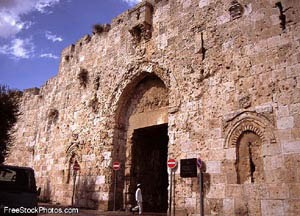
Whew. I had no idea that the story of Hanukkah was so complicated. My previous posts about this Jewish holiday have for the most part focused on the eight days that the menorah in the Temple at Jerusalem burned from a flask of oil that should have lasted only one day, with the ensuing symbolism of lights and candles, feasting and celebration. (Latkes, anyone?) But the actual Hebrew prayers, including “Al Hanissim”1 recited as part of the celebrations, say nothing about the miracle of the long-lasting oil. Why is that, and when did the oil miracle become part of the story? I will say up front that there are no completely definitive answers to be found here. It’s been fascinating, though, to dig through quite a few sources and see how the subject is handled. Here’s an overview about the holiday as a whole and also what I’ve found out about this particular prayer.2



 Talk about a leading question! The answer is a resounding “yes.” There’s so much to be said about this supposedly simple song that I just don’t know where to begin.
Talk about a leading question! The answer is a resounding “yes.” There’s so much to be said about this supposedly simple song that I just don’t know where to begin. This piece repeats the phrase “bish’al han’ilah”–”as the gates begin to close.” So what are these gates?
This piece repeats the phrase “bish’al han’ilah”–”as the gates begin to close.” So what are these gates? What a wonderful message is contained in this song! Let me answer the question above first, and then I’ll cover some other issues. So the Hebrew words “Hine ma tov uma naim shevet achim gam yachad” are from Psalm 133 in the Hebrew Bible. I have always loved this psalm, and since the entire thing is so short I’m quoting it in full:
What a wonderful message is contained in this song! Let me answer the question above first, and then I’ll cover some other issues. So the Hebrew words “Hine ma tov uma naim shevet achim gam yachad” are from Psalm 133 in the Hebrew Bible. I have always loved this psalm, and since the entire thing is so short I’m quoting it in full: What’s distinctive about Ron Jeffers is that he’s a living composer who has produced a significant amount of original music and arrangements, all for sale as sheet music from various outlets including his own company, Earthsongs, and whose music is performed quite frequently if YouTube is anything to go by, and yet . . . he has no online presence whatsoever. No personal website. No blog, No (worst of all) Wikipedia entry! How is this possible? In fact, if I hadn’t looked under “Ronald Jeffers” instead of either “Ron Jeffers” or “Ronald Harrison Jeffers,” I wouldn’t have gotten much information beyond his date and place of birth and a list of his publications.
What’s distinctive about Ron Jeffers is that he’s a living composer who has produced a significant amount of original music and arrangements, all for sale as sheet music from various outlets including his own company, Earthsongs, and whose music is performed quite frequently if YouTube is anything to go by, and yet . . . he has no online presence whatsoever. No personal website. No blog, No (worst of all) Wikipedia entry! How is this possible? In fact, if I hadn’t looked under “Ronald Jeffers” instead of either “Ron Jeffers” or “Ronald Harrison Jeffers,” I wouldn’t have gotten much information beyond his date and place of birth and a list of his publications.